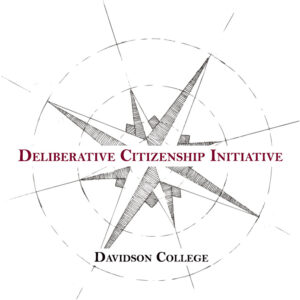 By Steve Kaliski, DCI Fellow
By Steve Kaliski, DCI Fellow
Teachers probably recognize the moment: you’re leading class discussion on a particularly ripe or personal topic. You’ve asked your students to abide by some system of mutual respect as they tiptoe into sharing vulnerable, fraught insight. Now, the floor is open, and one by one, the group is starting to participate. You must guide the ensemble from one speaker to the next, inserting yourself where necessary but basically staying out of the way. You’re here to listen.
The topic itself has your heart racing a bit, too. How will you bookend the conversation with commentary that exudes expertise yet humility? How will you make sure you don’t slip up and say the wrong thing? Who raised their hand first? Do you have enough time to go over the next assignment in the last five minutes of class? Do you have scallions for the stir fry tonight? Do you need to swing by Teeter after work? Do the Hornets still have a shot at the sixth seed?
Disparate thoughts race around, and you give yourself permission to chase these thoughts because, after all, this conversation is not about you. You’re just here to listen.
But then the tricky moment happens. A student finishes a comment, and you snap out of your thought spiral to sense that this comment packed a particular punch. You need to validate it somehow. This student needs to feel appreciated. But as you were off wondering about whether tomorrow’s reading was behind a paywall or not, you forgot to do the one thing you were here to do. You forgot to listen.
So how do you respond? Let’s say Jessica just spoke.
JESSICA: …and yeah, that’s pretty much why my family is passionate about this.
(pause)
YOU: Thanks, Jessica. Anyone want to go next?
This might seem like a perfectly fine response for a discussion facilitator, and oftentimes, it works well enough, or at least it does no harm. However, as I’ve learned during my time facilitating D Teams this year, in moments of “daring sharing,” your participants need a bit more from you than “thanks, next.” And if your attention has wandered under the false assumption that listening is inherently passive and thus less work (it happens to all of us!), you might need to close the excess tabs in your brain and really focus on the people in the room with you.
What would be a good response here, one that’s validating but does not center you over your conversation participants (in this context, they are your students, but they might also be your staff, your family, or your team)? The key is to make sure your speaker feels heard. This is especially vital on Zoom, where the normal approving signals of body language are difficult to perceive.
But it’s hard to make someone feel heard while you as the facilitator want to remain de-centered.
I try to listen for the “one thing” that I can repeat or rephrase back to the speaker as a signal of my connection to their words. If Jessica spoke at length about her family’s involvement in the topic, and at some point she mentioned a “love of the outdoors” as a major part of that, the dialogue might now be:
JESSICA: …and yeah, that’s pretty much why my family is passionate about this.
YOU: Thanks, Jessica. Yes, that makes a lot of sense, especially the huge importance of the outdoors. Yeah. That connects. (introspective pause) Thanks again. Anyone want to go next? Or maybe build off of what Jessica said?
It’s not an earth-shattering facilitation move, but it’s important. Listen closely, and echo something, anything. Your participants will feel like they’ve said something that landed, that they’ve added to the discourse.
These are particular tools of the weaver approach to facilitation. I speak more about different approaches to facilitation and some tips for facilitators in the demo video I created for the Verna Miller Case Symposium. Feel free to watch it here: https://deliberativecitizenship.org/demonstration-of-facilitation-styles/.

Leave a Reply